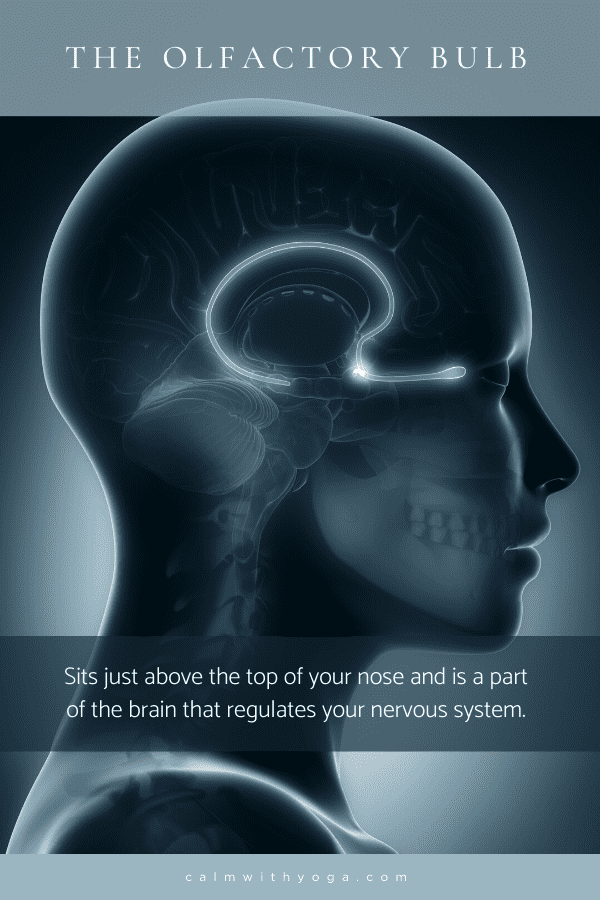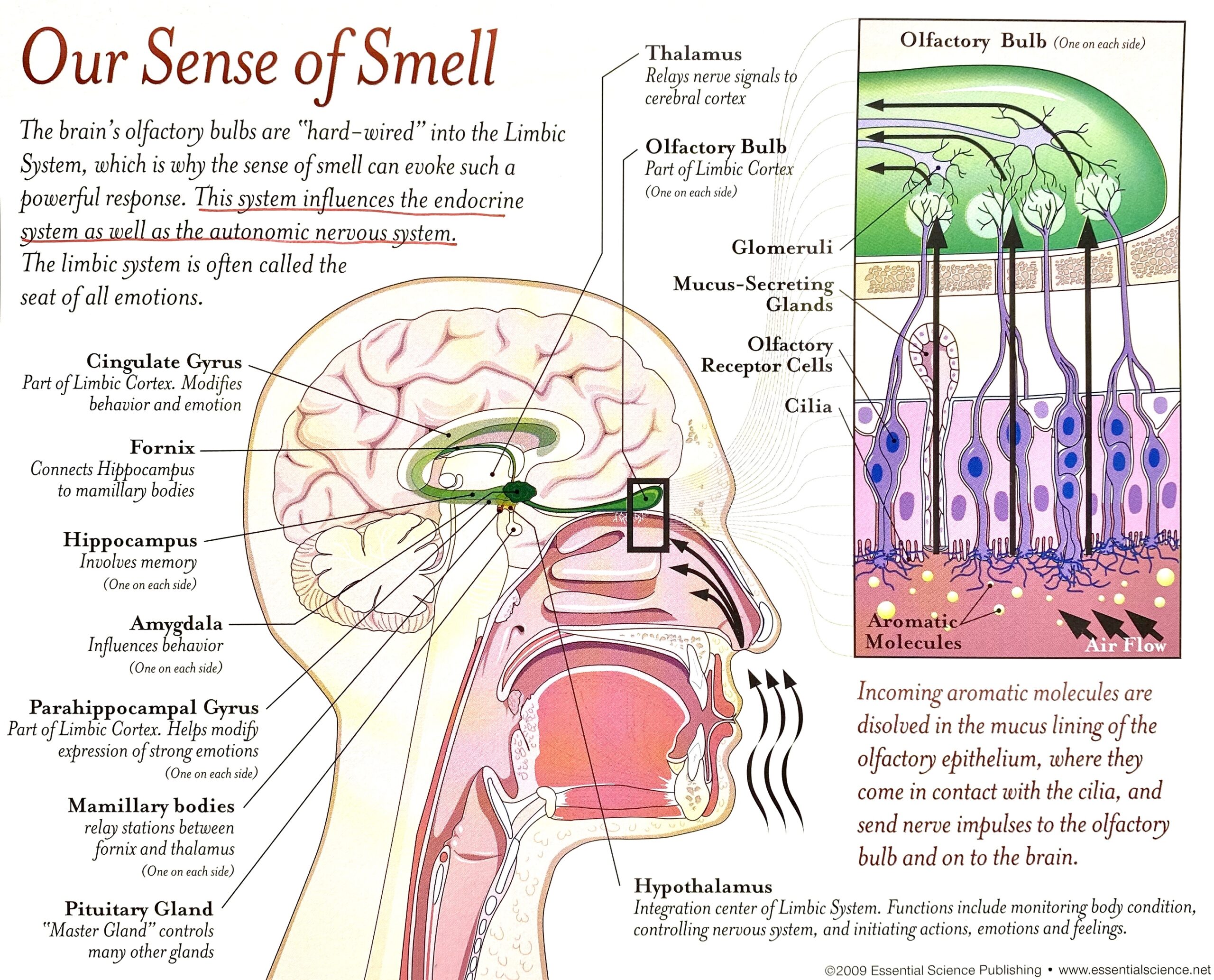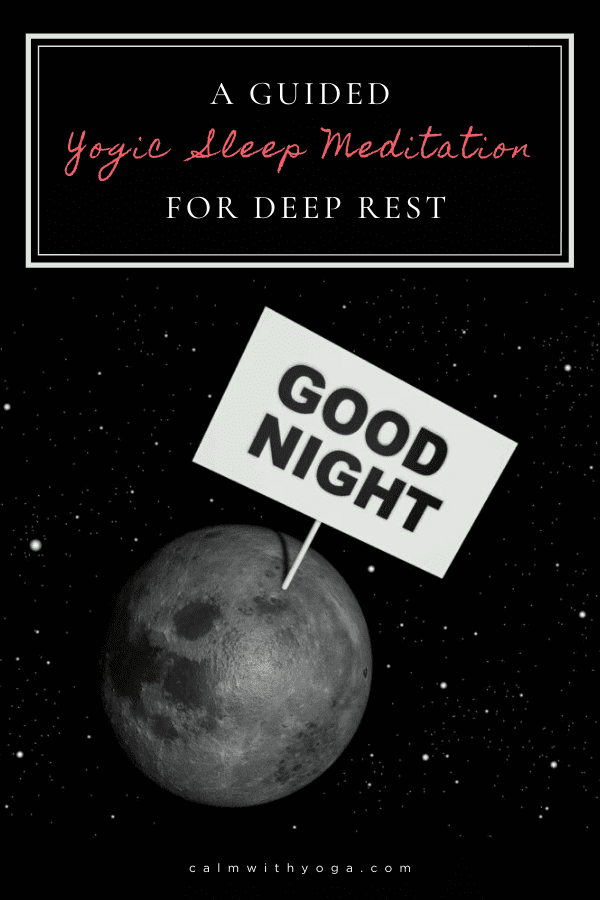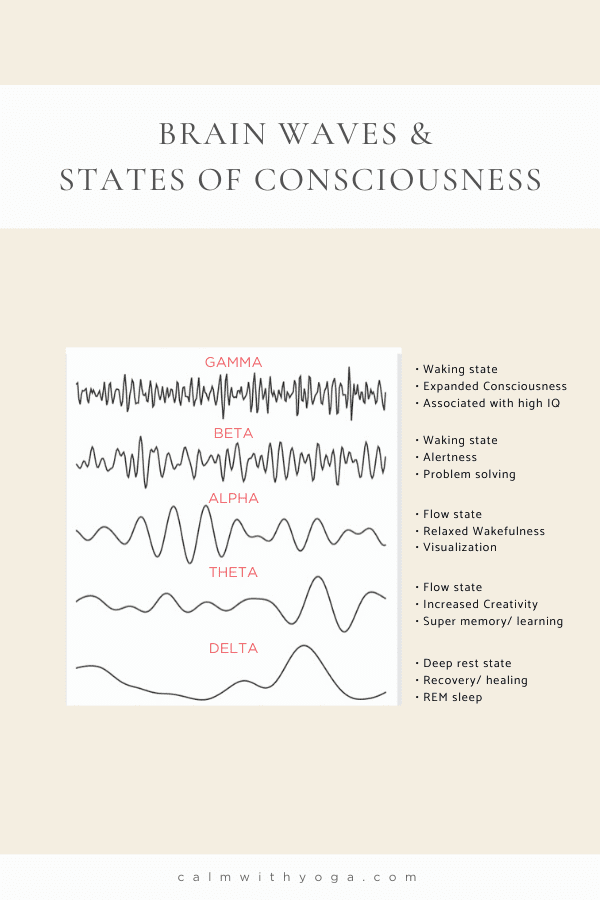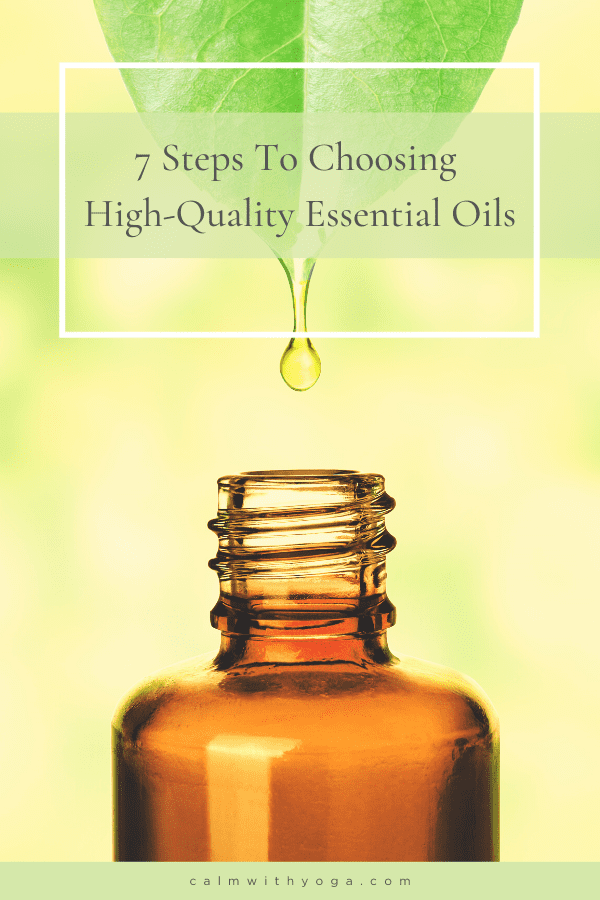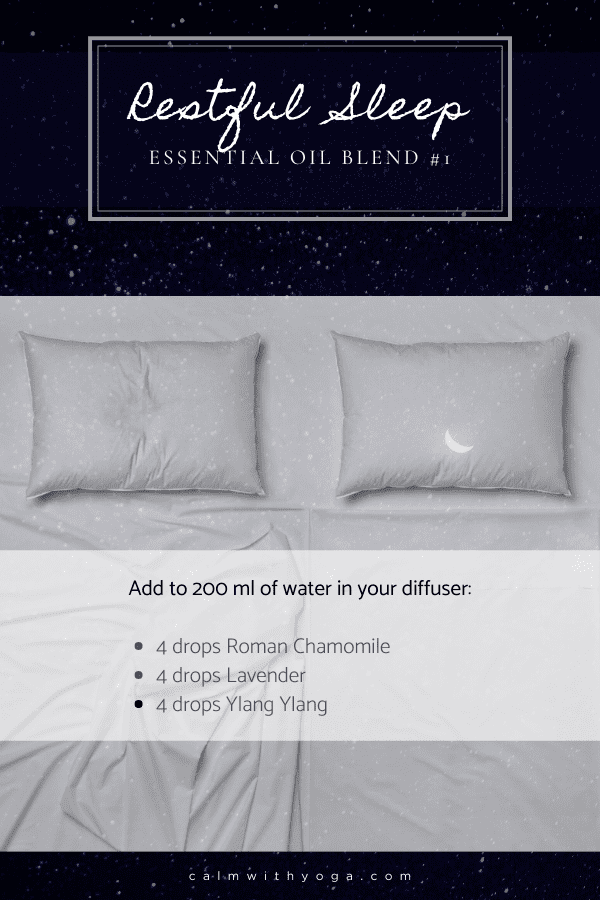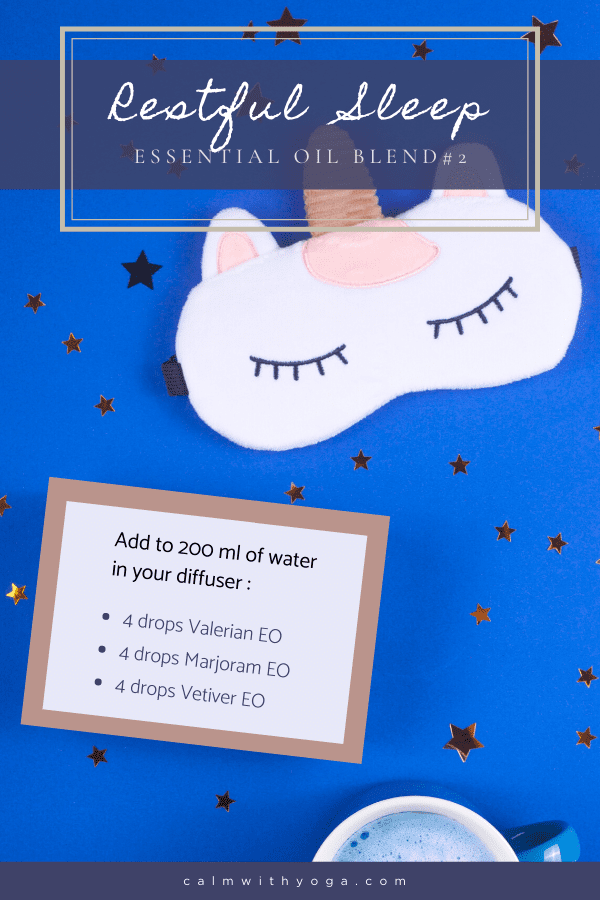– Arianna Huffington, author of “Sleep Revolution” Chronic sleep deprivation has been attributed to:
lowered immunity (1) increased inflammation (2) hormonal imbalances (3) weight gain (4) food addictions foggy thinking workplace accidents (5) car accidents (6)
Getting a good night’s sleep is sometimes just not easy for many reasons. Most of us sacrifice or have sacrificed sleep due to heavy workloads, parenting duties, insomnia, or even anxiety. So we often turn to medication or over-the-counter sleep aids to help us rest better. The downside is that they both come with their fair share of unwanted side effects like constipation, diarrhea, dizziness, appetite changes, tingling in limbs, and daytime drowsiness. Plus, you tend to wake up groggy and sluggish the next morning. Now more than ever people are turning to natural solutions to chronic sleep problems and to help them sleep better. Essential oils offer Mother Nature’s most potent form of natural sedatives and relaxers, without the grogginess and side effects. When used mindfully and correctly, undiluted essential oils (EOs) are a safe and cost-effective natural option that can be used nightly. EOs are highly concentrated aromatic compounds extracted from tree or plant material such as bark, leaves, flowers, roots, resin, fruit, or nut. They’re considered a form of herbal medicine and holistic healing, and their therapeutic application is often referred to as aromatherapy or plant therapy. In recent years there’s been a rise in scientific studies and research data that suggests EOs can help to calm anxiety, relieve tension, improve mood, increase wellness, and can even balance the nervous system. This is important because a balanced nervous system means a rested body and mind. Insomnia and difficulty sleeping or staying asleep is often the result of nervous system imbalance.
How EOs Work to Help You Get Better Sleep
EOs enter your body via:
inhalation (aromatic compounds enter the bloodstream via the lungs and enter the nervous system via the olfactory bulb) topical application (enters the bloodstream via the skin)
Because EOs have a direct pathway to the brain and nervous system via the olfactory bulb, they can greatly impact our state of consciousness, mood, and even bodily functions. Different oils have different effects so it’s important to stick with the ones that are known to have a calming and sedative effect for sleep purposes. Lemon, for example, has been shown to worsen insomnia symptoms in some people. Studies show that:
Inhalation of valerian essential oil has been shown to significantly prolong sleep time while increasing GABA (gamma-aminobutyric acid) activity in the brain. GABA is a neurotransmitter that helps your mind calm down and stay asleep throughout the night. (7)
Roman chamomile essential oil can significantly improve sleep quality in intensive care unit patients better than other more conventional methods. (8) The inhalation of chamomile oil can result in a calmer state, a balanced mood, and an increased ability to achieve deep sleep. (9)
A series of clinical trials showed that ingesting 80 mg once a day of steam-distilled lavender oil resulted in reduced restlessness and agitation amongst 221 patients suffering from an anxiety disorder. They also noted improved sleep quality and an increase in general wellbeing and quality of life. (10) Lavender essential oil has been shown to be a natural and effective alternative as a treatment for mild insomnia. (11)
Clary sage impacts the autonomic nervous system and can helplower blood pressure and breathing rate while inducing the relaxation response. (12)
Researchers found that vetiver oil has a sedative effect that lowers activity in the amygdala (a part of the brain that oversees emotions and the fear response). (13)
When inhaled the active ingredients in frankincense oil can augment feelings of positive emotions and the sensation of warmth by influencing the brain and its emotional pathways. High-vibe emotions help us sleep more soundly, btw. (14) The active ingredients in frankincense also make it a potent anti-inflammatory. (15) Since insomnia and poor sleep habits cause inflammatory reactions, Frankincense oil can help lower inflammation and therefore also lessen the adverse effect of not sleeping enough. (16)
Ylang-ylang oil has been shown to significantly improve sleep quality in cardiac rehabilitation patients. (17)
Its active ingredient, santalol, may be useful for those who have difficulty maintaining sleep. (18)
The Pros & Cons of EOs for Sleep
EOs are potent – a little goes a long way. For example, did you know that 30 lbs of lavender flowers go into just one bottle? Just one drop offers multiple active compounds that help you enter a relaxed state in a matter of moments. If you use EOs mindfully and correctly, you’ll likely experience little to no side effects – no excessive drowsiness, disturbed sleep, or morning grogginess. High-quality EOs are undiluted and very concentrated. This gives you access to nature’s calming plant wisdom without any synthetic or manmade ingredients or chemicals. Think of EOs as the perfect addition to your natural preventative mental and physical health care regimen. (Plus: unlike medications and most over-the-counter sleep aids you can create potent blends to maximize their sleep-inducing effects.) Initial sleep research is promising and certain EOs clearly show an impact on body functions that impact sleep, ie: heart rate, breath rate, and stress hormones.
EOs are potent – careless or excessive usage may cause irritation and even the opposite desired effect. (For example, when used in excess, Ylang Ylang can cause headaches.) Do your research beforehand – some EOs, like rosemary and citrus oils, tend to have a stimulating effect and will energize you instead of calming you. (Bergamot appears to be an exception.) Unfortunately, there are many adulterated EO products out in the market that feature misleading claims and labels. It’s estimated that more than 75% of all EOs on the market are either diluted or contaminated with synthetic material. (19) There are contraindications to be aware of for EO use. For example – clary sage and vetiver are to be avoided during pregnancy. Most of the sleep research done on EOs is based on personal subjective experience which skews results. Also, keep in mind we all react differently to EOs because our biochemistry is different so what works for one person may not work for you.
7 Sleep Tips To Enhance The Efficacy of EOs
1 – Yogic Sleep Meditation Since trouble sleeping is often due to an overactive mind it’s a good idea to wind down with a guided sleep meditation, preferably just before bed. Ancient texts say that the true practice of Yoga is learning how to still the ripples of the mind. Neuroscientists today refer to stilling the mind’s ripples as shifting brainwaves. Brainwaves are the electrical currents of our minds at work, and they slow down as we calm down. Yogic sleep meditation (aka yoga nidra) offers us an easy and pleasurable way to hit the snooze button and not soothe both body and mind. This type of meditation helps to slow down our brainwaves and has even been shown to help us reach delta brainwave state, also known as ‘the deep sleep state‘. (20)
Pro tip: Use any of the EO blends listed below and turn your diffuser on while you meditate. Do this when you’re already in bed and ready to doze off. 2 – Natural supplements Pairing EO nightly use via a diffuser or pillow mist spray with other natural supplements is an excellent way to reinforce healthy sleep habits. Supplements like melatonin, GABA (gamma-aminobutyric acid), CBD oil (cannabidiol), 5-HTP (5-hydroxytryptophan), and magnesium all work to soothe and calm the nervous system so you fall asleep and stay asleep. 3 – Cut off caffeine consumption by 1 pm One of the major guilty culprits of sleep trouble is the overconsumption of caffeine, especially after 1 pm. If you suffer from anxiety, consider switching to decaf entirely as caffeine can make your symptoms worse. If your body is wired on caffeine, EOs will not be as effective. 4 – Sleep in a dark room Making your room as dark as possible and devoid of artificial light will help your body realize it’s time to stay asleep. This means doing away with night lights, phone lights, and even outside light coming in from your windows. According to the Sleep Foundation: “Artificial light after dark can send wake-up messages to the brain, suppressing the production of the sleep-inducing hormone melatonin and making it harder to fall asleep and stay asleep. In fact, a recent study showed that even bright room light could have this chemical effect. And early sun rays begin to activate the body and can cause some of us to rise before we’re ready.” (21) 5 – Crank up the AC Sleeping in a colder room can impact sleep quality as one study found. Researchers concluded that subjects with a sleep disorder slept better and longer (and woke up more alert) when the room was between 61-75 degrees Fahrenheit. (22) Our body temperature, glucose levels, and heart rate drop when we enter deep sleep so rooms that are warmer than the above range interfere with the body’s natural process. 6 – Block blue light Blue light is artificial light emitted from our phone screens, computers, television, and even normal housing lights. Studies show that blue light at night can interrupt our body’s natural 24-hour clock (circadian rhythms), which in turn disrupts sleep. (23) Use blue light blocking glasses, night mode on your phone, and install the app called f.lux to block blue light on your computer. 7 – Don’t eat anything 4 hours before bedtime A full belly and the digestive process make it harder to sleep soundly so try to eat your last meal no later than 4 hours before bed so you can ensure things like acid reflux and gas won’t get in the way of you catching your zzz’s.
How To Choose High-Quality EOs for Sleep
Approximately 75% of oils on the market are adulterated or impure. Not all EOs are created equal and unfortunately, there is little regulation to enforce uniform industry quality standards. Marketers may misrepresent or mislabel products and consumers are none the wiser. Low-quality products may be tainted with additives, fillers, or other chemicals that may be harmful to your health and have adverse effects on sleep quality and mood. Here are 7 fool-proof tips to help you: 1 – Look for certified organic therapeutic grade essential oils. Certified organic oils are the highest grade of essential oils with maximum relaxation potential. Synthetic oils are the lowest grade of oil types and their sedative effects are minimal if any. This is why people often perceive that EOs aren’t effective sleep aids. Oils labeled as “natural” and “pure” are one step above synthetic but tend to be so overly processed they lose their therapeutic power. Therapeutic grade oils are less processed than “natural” oils but may come from herbs and plants containing pesticides and chemicals. 2 – Check that testing has been done. You can request the company’s test results. Any reputable company will release them to you upon request if they haven’t disclosed the results in their marketing. The most effective test is called GC/MS (gas chromatography and mass spectrometry). GC/MS testing can detect additives, mixed oils, solvents, and other chemicals. It also gives a measured and detailed account of an oil’s chemical constituents. 3 – Research the company. Is this company reputable? Do they disclose where the oil is sourced? Are the plants and herbs harvested at optimal times to maximize quality and efficacy? Do they have specific product recommendations, content, and research around sleep and relaxation? Again, be mindful of good marketers vs good products. 4 – Check the label. Is the ‘certified organic’ stamp on it? Is the Latin name on it along with the common name? Does it state if it’s for therapeutic purposes? Does it specifically note sleep or relaxation in the description? Is there consistency between their products and the EO ingredients. Does the label indicate if it can be used for internal purposes or if it’s for topical or aromatic use? Is there an expiration date? A manufactured date? 5 – Check the price. Is the price similar to other similarly sized products on the market? A noticeably low price is often a warning sign that the oil is low-quality or adulterated. Higher-quality oils can command a premium price, which is worth it if you’re after the highest-quality and medicinal potency. 6 – Check the Latin name. It’s often the case that a plant type can have the same or similar common names but different varieties. Different varieties often offer different chemical compounds and different benefits. The Latin names for EOs are known as their scientific names. Latin names tend to be in italics. 7 – Check in with yourself. Learn to be your own judge and use your senses to assess the oil. Pay attention to how your body responds to the oil. Use your intuition and trust it when you get feedback. Note – people can have different reactions to oils. Just because an EO is known to have a calming effect, it doesn’t mean each person will experience that same effect. We’re all made up differently and have our own unique biochemistry that interacts with the oils. For some people, for example, lavender and sandalwood are stimulants rather than a sedative.
How To Use EOs + 3 Sleep-Inducing Essential Oil Blends
These blends contain the best essential oils to help you wind down and rest up. Try adding them to your bedtime routine. Remember, a little goes a long way. Just a few drops of essential oil should do the trick for a better night’s sleep. Keep in mind, again, that everyone reacts to oils differently so just pay attention to how your body responds. Evening Meditation Blend
Restful Sleep Blend #1
Restful Sleep Blend #2
The best EO uses for sleep are: 1 – Diffuser – essential oil diffusers break up and disperse active compounds into millions of small particles that fill the air. Diffusing oils in your bedroom is a great way to end your night and head off to dreamland. 2 – Bath soak – add EOs to Epsom salt and other ingredients to bathwater for a nice relaxing soak.
4 – Massage oil – Mix EOs with a carrier oil like jojoba oil, fractionated coconut oil, sweet almond oil and practice self-massage. 5 – Pillow mist – Fill a spray bottle with EOs and other ingredients and spritz on your pillowcase before bed REFERENCES : (1) https://www.sciencedaily.com/releases/2017/01/170127113010.htm (2) https://academic.oup.com/jcem/article/85/10/3597/2852263 (3) https://journals.physiology.org/doi/full/10.1152/ajpendo.00553.2003 (4) https://www.ncbi.nlm.nih.gov/pmc/articles/PMC3065172/ (5) https://www.sciencedaily.com/releases/2018/09/180918082041.htm (6) https://www.ishn.com/articles/94247-lack-of-sleep-linked-to-274000-workplace-accidents-a-year (7) https://academic.oup.com/chemse/article/31/8/731/363897 (8)https://www.ncbi.nlm.nih.gov/pmc/articles/PMC3588400/ (9) https://www.researchgate.net/publication/ (10) https://www.ncbi.nlm.nih.gov/pubmed/20512042/ (11) https://www.liebertpub.com/doi/abs/10.1089/acm.2005.11.631 (12) https://www.ncbi.nlm.nih.gov/pmc/articles/PMC3700459/ (13) https://www.ncbi.nlm.nih.gov/pubmed/25553641 (14) https://www.ncbi.nlm.nih.gov/pmc/articles/PMC2493463/ (15) https://www.ncbi.nlm.nih.gov/pubmed/17895408 (16) https://www.ncbi.nlm.nih.gov/pmc/articles/PMC4666828/ (17) https://www.ncbi.nlm.nih.gov/pubmed/31556690 (18) https://www.ncbi.nlm.nih.gov/pubmed/17879595 (19) Essential Oils Revolution Online Summit, Interview with Robert Pappas, “Essential Oil Preparation” (20) https://www.iaytjournals.org/doi/pdf/10.17761/ijyt.23.1.t636651v22018148 (21) https://www.sleepfoundation.org/bedroom-environment/see/making-your-room-dark (23) https://academic.oup.com/sleep/article/35/4/513/2558883 (24) https://www.health.harvard.edu/staying-healthy/blue-light-has-a-dark-side
